Home »
Misc »
How to be a better forward in basketball
How to be a better forward in basketball
How to Dominate as a Power Forward in Basketball (Tips and Tricks)
The power forward (also known as the “four”) is an integral part of any basketball team that intends to play with toughness and physicality.
Traditionally, the power forward is a player who is bigger and stronger than the point guard, shooting guard, and small forward, but a bit shorter and quicker than the center.
The power forward is primarily considered an interior player that scores in the post.
But depending on the offense, they will most likely also have to be comfortable on the perimeter in order to be considered dominant.
5 Traits of a Dominant Power ForwardA great power forward will be asked to do a number of things on both ends of the court.
But many of those are things that not all players can do.
So, what characteristics can make for a dominant power forward in particular?
1. SizeAlthough we support positionless basketball and it’s important for players to be comfortable in multiple spots on the court, size does still matter.![]()
The ideal power forward is big enough to create shots for himself in the post and also to defend the other team’s biggest players.
Although size often becomes a bigger separator as players grow older, this still applies to youth basketball as well, where there may not be a true “center.”
The power forward may very well be the biggest player on a youth team.
2. StrengthWhile a player has to have some natural size to be qualified as a power forward, he must combine that size with strength in order to be considered dominant.
A dominant power forward is probably the strongest player on the team, and also has to be the most willing to use that strength.
A player who is asked to be one of the team’s best rebounders and defenders while being matched up against the opponent’s biggest players will have to be strong in order to be successful.
3. ToughnessToughness may be the most important trait of a great power forward.
Size and strength are very necessary physical characteristics, but alone they are not enough to make the player a truly dominant force.
Great power forwards are usually the toughest and nastiest guys on the team.
Willing to defend the strongest player on the court, dive on the floor for loose balls, and fight for rebounding position every time a shot goes up.
Perimeter players (and sometimes even centers) can get away with avoiding contact and playing with more finesse if they’re good enough.
But it’s very rare for a power forward to be considered great if they are not willing to play with physicality.
4. VersatilityWhile it’s true that a great power forward is most likely a big, strong player who physically imposes his will, he will not be a truly dominant player if he or she is just a one-dimensional brute.
The best power forwards are the players who can provide the strength and toughness mentioned above with the skill to step out and be serviceable on the perimeter as well.
Especially if the power forward is playing within a 4-out 1-in offense, the center may be the player who primarily occupies the block.
This means that the power forward must be able to handle the ball on the perimeter if necessary, and more importantly, to step out and knock down a midrange shot or 3-pointer.
Versatility should especially be stressed at the youth levels where players are not done growing or developing.
The player who meets the physical traits of a power forward for an elementary school team could become the point guard or the center in the future.
5. SelflessnessThe power forward is not the team’s primary ball handler and is typically not a team’s primary scorer, but he will be asked to rebound, screen, defend, and play with toughness at all times.
Any player who is asked to do the most difficult jobs on the court without being regularly rewarded with points has to be a true team player.
Though in some ways this is true at all positions, the selfish player who only wants to be the leading scorer and have the ball at all times will not be a great power forward for any team.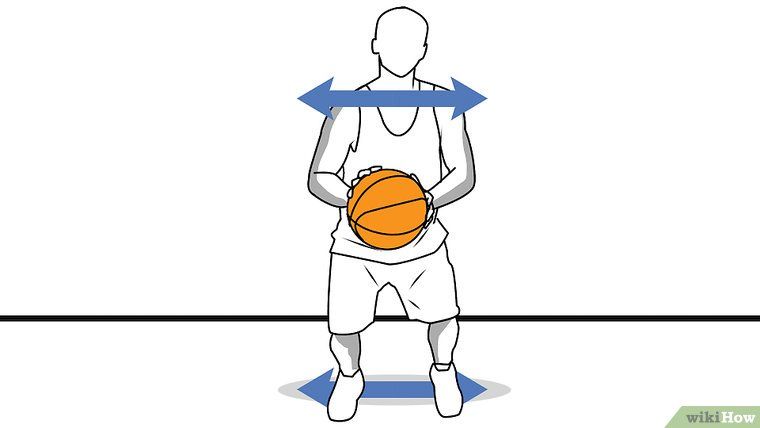
Roles and Responsibilities:The power forward is expected to be a big, strong, tough player who can also play with skill.
But how should they use those traits, exactly?
Even though the power forward is a physical player who is not afraid of contact, this does not mean that he is simply a big body or an enforcer.
Here are a few specific responsibilities of a power forward:
a. Rebound on Both Ends of the CourtThe power forward’s most important responsibility is as a rebounder.
It doesn’t take a Hall of Fame coach to realize that the team who gets the most rebounds will oftentimes end up getting the most shots, and that the team who gets the most shots will oftentimes score the most points.
Therefore, as one of the strongest and toughest players on the team, the power forward has to be a great rebounder on both ends of the court.
When a shot goes up on the defensive end, he must be willing to work for a box out against one of the biggest players on the other team, and he must be able to secure rebounds.
When a teammate takes a shot on the offensive end, the power forward must fight for an offensive rebound to create second chance points as well.
The power forward will most likely be the team’s leading rebounder - or second, if the team has a great rebounding center as well.
b. Defend the Biggest, Strongest OpponentsAs one of the biggest and toughest players on the team, it’s the power forward’s responsibility to defend the biggest and toughest players on the other team.
Of course, this is not always an easy task.
This is where size, toughness, and strength become absolutely necessary.
A player who lacks even one of those traits can find himself getting scored against in the low post or getting beat for offensive rebounds.
Depending on the situation and the personnel for both teams, it’s also possible that the power forward will have to guard players who are slightly smaller and quicker, and also players who are slightly bigger and stronger.
c. Score in the PostAlthough the power forward is often thought of as a rebounder and defender more than as a primary scorer, to be a dominant player at any position, you must still be an offensive threat.
The power forward has to be an inside presence that is capable of scoring in the low post.
This means a great power forward must have multiple ways to score with his back to the basket, including one “go-to” post move.
It is important to be serviceable on the perimeter as well, but “power” is included in the position’s title for a reason, and being a truly dominant power forward on the offensive end starts with strong, physical moves in the paint.
d. Extend the Defense as a Capable ShooterThe difference between a power forward who is “just” a strong, physical brute and a truly dominant power forward is oftentimes the ability to contribute from the perimeter.
Depending on the age and skill level, power forwards who are able to only play “bully-ball” may sometimes be very difficult to stop. ..
..
But as both the age and skill level go up, a power forward will have to be capable of more in order to dominate.
Again, we promote the concept of positionless basketball because a team-oriented offense with versatile players is much harder to stop than one that is centered around just one or two players.
A power forward who can step out and make an open midrange or three-point jump shot gives your team a much better chance to play offense with that philosophy.
e. Screen to Create Opportunities for TeammatesUnless the power forward happens to be the best player on the team, they’re probably not expected to be the primary scorer.
As a big, strong, tough player, you have to depend on the power forward to set physical screens that create opportunities for teammates to score.
Of course, all players are expected to screen...
But it needs to be a strength in order for a player to be considered a dominant power forward.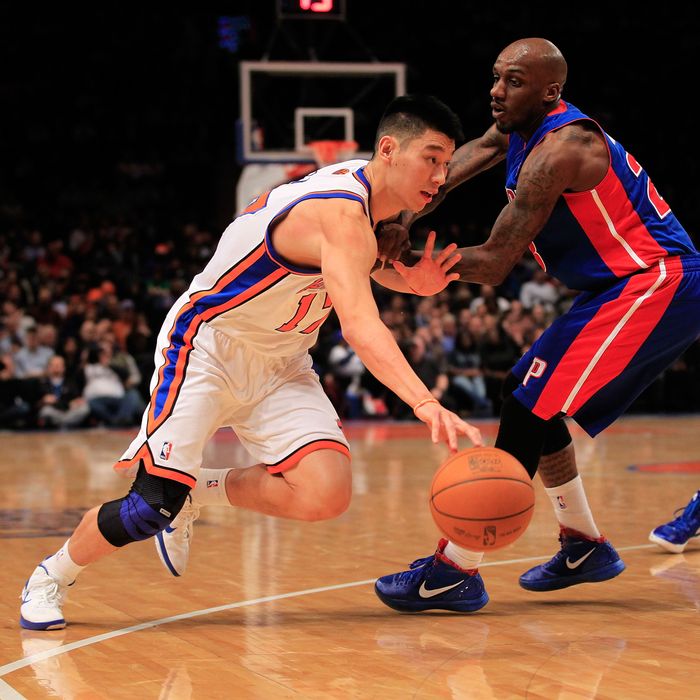
f. Make Hustle Plays and Bring EnergyAs one of the toughest on the team, it’s the power forward’s responsibility to make hustle plays.
- Diving on the floor for loose balls
- Taking charges
- Boxing out
Of course, as a coach, you want all of your players to be responsible for bringing energy and making tough plays like these...
However, a great power forward who is the toughest player on the team is responsible for initiating that energy.
Just like your team’s selflessness and flow will often begin with your point guard, your team’s toughness and energy will often begin with your power forward.
4 Tips for a Power ForwardNow that we know what traits make for a strong power forward and what that power forward should be responsible for on the court, let’s talk about what a player can do to improve in those areas.
1. Work on Back-to-the-Basket Post MovesThe power forward is not always considered a team’s primary offensive threat, but they must still be able to score in the low post when given the opportunity.
Players that have a number of reliable back-to-the-basket post moves have become more rare in today’s game, and so have truly dominant power forwards.
This is not a coincidence.
In order to be a truly dominant power forward on the offensive end of the court, you must have at least one “go-to” move in the post, and other options you are comfortable using as well.
Developing those post moves will require breakdowns against live post defenders.
2. Do Live Contact Rebounding DrillsAs mentioned earlier, the power forward’s most important role on the team is as a rebounder.
While a number of the traits that make a great rebounder (size, instinct, toughness, etc) are somewhat natural, they can be worked on as well.
Any game-speed defensive breakdown drill that requires a power forward to box out another player who is actively pursuing a rebound, or any offensive drill that requires a power forward to fight for position against a defender, can improve a player’s rebounding ability.
Live drills with real shot attempts will teach a player to react to rebounding angles and also will force them to become more comfortable with initiating contact.
3. Get in Great ShapeIn order to make hustle plays, defend the other team’s strongest players, and bring energy to the court, you must be in great shape.
A dominant power forward is expected to provide a variety of threats on the offensive end, to bring toughness and grit to the defensive end, and to give effort for rebounds on both ends.
Doing all of those things for a full game at any level requires great conditioning.
As strength is a necessary trait of a dominant power forward, weight lifting must also be coupled with this conditioning.
A player’s physical conditioning and strength are often built in the off-season, but must be maintained during the season as well.
4. Don’t be “Just” a Post PlayerAs mentioned above, no power forward will be considered truly dominant if he is only a physical presence who can push people around.
It helps, of course, but the great ones are the players who also have the skill to play on the perimeter when necessary.
Any player who can add serviceable ball handling and shooting will be a much more threatening power forward, and they will also be more capable of playing positionless basketball.
Focusing on solely post moves to score in the paint or solely on weight lifting to improve strength can limit versatility for a power forward.
While both are certainly necessary, you must work on ball handling and shooting to compliment those post moves, and also improve agility and athleticism to compliment brute strength.
ConclusionA power forward can be an integral part of your team if he has things like size, strength, and toughness.
Traits that every coach wants all of their players to have.
However, a power forward can be dominant if he couples those traits with great physical conditioning, the willingness to make selfless plays, and the versatility to both defend and rebound and also score from multiple spots on the court.
The player who provides that rare combination to become a dominant power forward can bring that same toughness and energy out of his teammates, and ultimately can be the driving force behind your team’s overall identity.
How To Play Power Forward In Basketball: The Best Position
In basketball, a power forward is the player that lines up at the front of a team’s formation. The power forward often provides offensive and defensive rebounding, as well as post-up scoring. Power forwards are usually taller than other players on the court. Because it is their job to be able to defend against other teams’ centers. While also being tall enough to rebound over them. In this blog post, we will discuss what it takes to play power forward in basketball and some of the best power forwards in history!
What is The Role of a Power Forward in Basketball?
A power forward in basketball is a player that lines up at the front of a team’s formation. They are usually taller than other players on the court. Because it is their job to be able to defend against opposing centers. While also being tall enough to rebound over them.
Because it is their job to be able to defend against opposing centers. While also being tall enough to rebound over them.
Rebounding
For a power forward, rebounding is one of the most important aspects to be successful in this position. Because you are often matched up against players who are taller than yourself, it becomes difficult to rebound over them. If you can out-rebound your opponent and grab an offensive board for a putback or pull down some defensive rebounds during crunch time. Then that’s just another way that your team will benefit from having you on their side!
Defense and Shot Blocking
As a power forward, it is important to be able to play good defense. It’s not enough just being tall or having an intimidating presence. You have to actively move your feet well and always stay in front of your opponent. Shot blocking is also something that comes naturally for many power forwards because they are larger than other players on the court.![]() If there’s one place where you don’t want the ball going into, then it is definitely around this player at the front of their team formation.
If there’s one place where you don’t want the ball going into, then it is definitely around this player at the front of their team formation.
Blocking shots isn’t only about height; some shorter players like Dennis Rodman were great shot blockers as well! That’s why we highly recommend watching highlight reels of basketball history. Such as Rodman playing with Michael Jordan during his second three-peat with the Chicago Bulls.
Strength and Conditioning
To succeed in this position, players need to be very strong and fit. Strength is especially important when it comes to defending your opponent for an extended period or boxing out so that you can get rebounds if the ball isn’t coming right into your area. It all comes down to who’s stronger. Someone like Shaquille O’Neal was a power forward because he had what it took on both ends of the court!
But not everyone has access to muscle-building supplements such as Creatine, which is one supplement we recommend looking into. This ingredient helps with strength training by enhancing creatine phosphate energy metabolism within our cells. While also expanding blood flow through vasodilation (opening up your veins and arteries). We want you to think about your goals and what you want to achieve as a power player on the court.
This ingredient helps with strength training by enhancing creatine phosphate energy metabolism within our cells. While also expanding blood flow through vasodilation (opening up your veins and arteries). We want you to think about your goals and what you want to achieve as a power player on the court.
How Do You Become a Good Power Forward in Basketball?
To become a good power forward in basketball, you must have height and strength. You also need to be able to play both ways because you might find yourself playing on the outside if your team has smaller players who can run faster than you down the court. In addition, always hustle during every minute of play since there are no timeouts in basketball. You need to be able to play through the entire game at 100% speed. Since resting on the court is not an option!
Power Forward’s Average Height
The average height for a power forward is around six feet tall. However, some players play the position who stands at about seven or eight feet tall. It is important to be tall enough. But also quick and fast on your feet so you can keep up with smaller players.
It is important to be tall enough. But also quick and fast on your feet so you can keep up with smaller players.
Power forwards are usually taller than other players on the court. Because it is their job to defend against opposing centers while being able to rebound over them.
How Do You Play Power Forward in Basketball?
Power forwards are often of a larger build than other players on the court. This is because power forwards plays closer to the basket. Where more strength and weight can be an advantage over their opponent who will usually have less size at that position. Power forwards must also possess good shooting skills beyond the close range or around the paint to excel in today’s game.
There are many different qualities and skillsets you need to play power forward, including strength, athleticism, endurance, footwork, and coordination! You must be comfortable with physical contact either when rebounding or setting screens for your point guard. Being patient around the hoop during post-up moves can lead to easy points too!
Being patient around the hoop during post-up moves can lead to easy points too!
Best Power Forwards in Basketball History!
Kevin Garnett
Kevin Garnett is one of the best power forwards in NBA history. He was a tremendous rebounder at both ends of the court, and his quickness allowed him to get around slower players on defense. Garnett was versatile and willing to play anywhere on the court, making him a valuable asset during his long career.
When it comes down to what makes an outstanding player great, KG had everything you want from someone who plays this position – strength plus speed plus hustle equals winning basketball games every time they step out onto that hardwood floor!
Dirk Nowitzki
Dirk Nowitzki is another power forward worth mentioning when it comes to listing the best power forwards in basketball history. He is a seven-footer with good range and the ability to put on some serious weight during his career (he has gotten up as high as 245 lbs)!
Dirk Nowitzki’s height, shooting skills, and endurance made him one of NBA MVPs best power players ever! He is a ten-time all-star, one-time NBA Finals MVP, and has scored over 30,000 points in his career!
Charles Barkley
Charles Barkley is another one of the greatest power forwards in NBA history.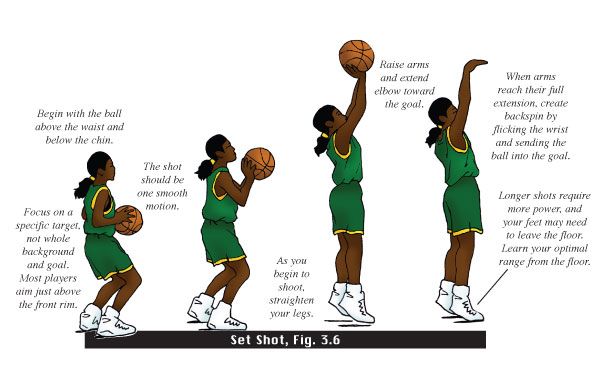 He was a great rebounder and he had good dribbling skills too! Charles Barkley could play just about any position on the court because of his size and strength, but power forward suited him best.
He was a great rebounder and he had good dribbling skills too! Charles Barkley could play just about any position on the court because of his size and strength, but power forward suited him best.
One thing that made Charles Barkley stand out from other players at his position was his crazy antics both on and off the court – expect to be entertained when watching this guy perform!
Dennis Rodman
As we mentioned earlier in our blog post, Dennis Rodman might not have been the tallest player around but he made up for it by being tough as nails when rebounding and playing defense against taller opponents such as Shaquille O’Neal and Hakeem Olajuwon.
Rodman was a skilled rebounder who knew how to position himself for the best possible chance at grabbing the ball, which is why he averaged close to 13 rebounds per game during his career!
Conclusion
In conclusion, power forwards is versatile players who typically stand around six foot nine inches tall. Power forwards rely on their strength and body mass to overpower opponents in the post, while also having good speed and endurance for the defense at both ends of the court!
Power forwards rely on their strength and body mass to overpower opponents in the post, while also having good speed and endurance for the defense at both ends of the court!
We had to go for a top-four, this time because we could not leave out the infamous Dennis Rodman, part-responsible for the Chicago Bulls’ two three-peats! So who’s your favorite power forward? Let us know below.
Here are Some of our Favourite Basketball Sneakers
Here we will be giving more of an opinion, rather than facts. Are the sneakers worth the price that they are being sold at? Should you upgrade from your current sneakers, depending on what boots you own? What features stand out on these sneakers? If any. Does it do the job? Speed, control, stability etc. Depending on your needs/preferences. We can also mention its durability, if we have collected enough data on the specific sneakers.
What did we expect vs. what we got. Is it maybe overrated/underrated?
Elite
Here’s our pick from the very best of the bunch.
Pro
On your way to the pro leagues? Here’s our pick.
Beginner
Want something to start with? Have a look at our pick.
Tips from experienced masters: how to become the best basketball player
Basketball is gaining more and more popularity every year. Today you will learn a few simple guidelines that will help beginners build a path to a real professional. The development and improvement of mastery depends on how much a person can master the skills of independent development in this area.
Physical training is the basis of a good basketball player
All professional athletes, including basketball players, have a good and comprehensive physical development. In order to have an advantage over your opponents in this game, you must develop the following qualities: strength, speed, endurance, agility and coordination.
By training in the basketball section, you are most likely mastering general physical fitness.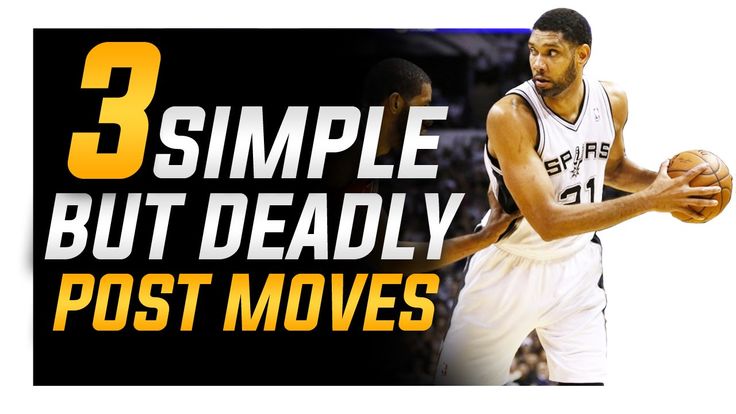 However, if you train only with the ball, then you will not be able to comprehensively develop your fitness. In order to achieve it, you need to take up other sports. For example, athletics - it will help develop endurance and speed. Other qualities can be developed with the help of specialized exercises.
However, if you train only with the ball, then you will not be able to comprehensively develop your fitness. In order to achieve it, you need to take up other sports. For example, athletics - it will help develop endurance and speed. Other qualities can be developed with the help of specialized exercises.
Each sport is unique and has a priority of development of one criterion, others, of course, are also developing, but to a lesser extent.
Baranovskaya & Arshavin: former common-law spouses exchanged barbs
Bacon, chocolate and chips: centenarians surprised with their unhealthy diet
The smallest black hole "Unicorn" was discovered not far from the Earth
7 important rules that every basketball player should know
- There is no limit to perfection. Any, even the simplest technique, can be perfected over the years. Which one to focus on? Pay attention to your own body.

- Athletes must master many techniques with high quality and then try to use them during training games.
- If a basketball player constantly develops his technical skills, then in time he will become a virtuoso.
- You must master your strengths and over time work on getting rid of your weaknesses.
- Do not try to go too far at once, gradually master new movements.
- Beginners should learn the whole arsenal at once and understand where to focus.
- The player can choose his specialization after he has already mastered many techniques. And then choose your style of play.
Master yourself
You must remember that every workout allows you to master your movements more clearly. Do not be lazy, and if there are no valid circumstances, then do not skip classes. The main thing is regularity. Over time, you will develop a habit, and you will not be able to imagine your life without basketball. Get rid of your weaknesses and focus on your strengths.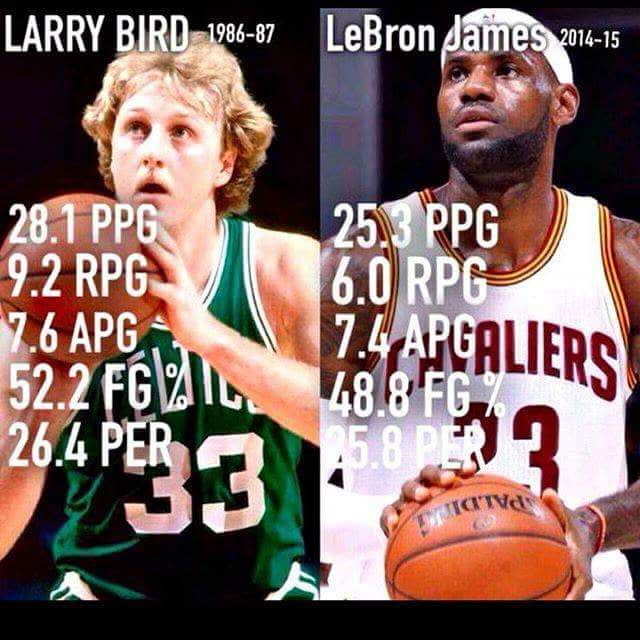
Reshetova told how she reacted to the appearance of Timati in "The Bachelor"
The Union of Enterprises proposed to increase interest in the press with the help of beer
You can do it in the refrigerator door, but not for long: how to store milk correctly
Practical advice that will make your game better
- Remember that every sport favors muscle elasticity. Do your best to be flexible. Eliminate the possibility of injury due to lack of flexibility.
- Carefully study all the rules of the game. Find out what you can get a foul for, what is dribbling, rebounding, etc. Also, if you have a friend who can pass on some knowledge to you, be sure to chat with him.
- Practice basic movements. Become your own coach, choose a sports ground that you like and train hard on it. Move at different paces, throw the ball into the air and catch it as you move.
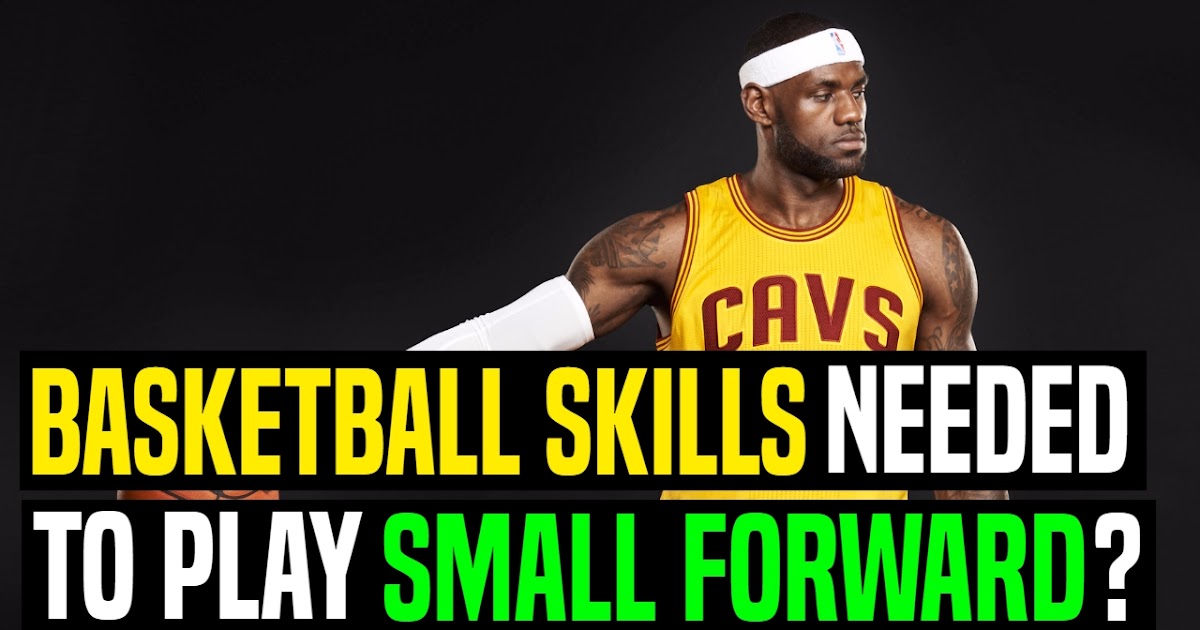 Practice throws into the ring from different angles.
Practice throws into the ring from different angles. - Practice with other basketball players. Learn all the terms and definitions and start using them regularly. They should fit tightly into your vocabulary.
- You must be a good friend. Pass often, occupy an open area in order to help another team member who is blocked.
- Come up with new tricks. Start with simple ones and gradually complicate them. Be patient and keep practicing until you succeed. Don't give up, be determined.
- Play at least once every two days, preferably every day. If you have the opportunity to go to the basketball court - by all means use it. Develop tolerance and a sense of devotion to basketball, and then you will definitely achieve certain heights.
- Play with peers. As a player, you need to know how your opponents handle the ball. If you can't beat them, then work harder. After solo workouts that focus on boosting ancillary qualities like speed and stamina, be sure to be the best on the court.

- Focus on dribbling. The only possible way to achieve great success is to be good at dribbling. You may be the most accurate basketball player on the planet, but you won't be a good player if you can't break through the opposing team's defense.
How to become a good basketball player?
- The main thing to remember is that hard work is the key to becoming a great basketball player. A cheerful spirit and self-confidence will definitely contribute to this.
- Remember that clever attacks are key.
- Eat healthy food. During the game you lose a lot of calories, recover well. Eat more protein and plant foods.
- When you play defense, always stand face to face with your opponent.
- Get used to constant interaction with teammates. Develop your signals.
- Remember that basketball is a team game where the team wins, not just one player. If you want to win, then be as united as possible.
- Be friendly and never scold other team members.
 If you think that you are better than them, then know that arrogance is a terrible character trait.
If you think that you are better than them, then know that arrogance is a terrible character trait. - You will win favor with the judges if you play fair.
- Earn the respect of your new teammates with a good game.
Top warnings to help you avoid big mistakes
- Never be afraid to throw the ball or attack if you think you're not ready. Also, never show off, let your partners know that you have your place and that you are a useful team member.
- Warm up well before playing. Do a light jog, then joint exercises and stretching. Flexibility while playing is a must. If you get hurt, you will blame yourself for it. So be smart.
- Get rid of stereotypes. You don't have to be tall to play basketball. Everyone can enjoy exercising.
- Do not show aggression towards other players, otherwise you will simply be escorted off the field. Treat your opponents with respect. It is clear that the release of adrenaline makes itself felt, but try to control yourself.

- Do not play basketball in enclosed spaces such as an apartment. The clatter of the ball can annoy your cohabitants. Moreover, you risk breaking something.
Keep your body in good physical shape
Sport involves the development of all physical abilities to one degree or another. To be a good basketball player, you need to keep fit, learn new tricks and learn new things.
Good athletes never miss a workout and constantly develop their skills. For many sports players, the ball is the meaning of life. Are you ready to sacrifice a lot in order to master it professionally?
Found a violation? Complain content
How to be a good basketball playmaker?
Use a strong defensive stance.
- Stay low. Keep your shoulders low and your hips back as you defend against an opponent. ...
- Be prepared to answer. ...
- Stay at arm's length from your opponent. ...
- Move your feet quickly.
Namely, what is the position of the striker in basketball?
Post 1: point guard Post 2: rear (shooting guard) Post 3: winger (small forward) Post 4: strong forward (power forward)
And how to become a basketball player in the world ?
Having active arms, being bent, keeping your arms in the air, keeping a close eye on the movement of the ball - these are the points you have to work on in order to master them. In NBA top Defenders (Leonard, Crowder, Thompson, Bradley, Allen) are always active whether their ball is in possession or not.
In NBA top Defenders (Leonard, Crowder, Thompson, Bradley, Allen) are always active whether their ball is in possession or not.
Then what are the 5 positions in basketball? . Posts 5 du cart
- leader. The leader is on the shopping cart what the thumb in the hand, an indispensable item. ...
- back. In the rear, there is predominantly a player whose main mission is to shoot at three points. ...
- Winger. ...
- Strong striker. ...
- Rotate. ...
- basketball in the Gallery.
What are the positions in basketball?
5 posts du cart
- leader. The leader is on the shopping cart what the thumb in the hand, an indispensable item. ...
- back. In the rear, there is predominantly a player whose main mission is to shoot at three points. ...
- Winger. ...
- Strong striker. ...
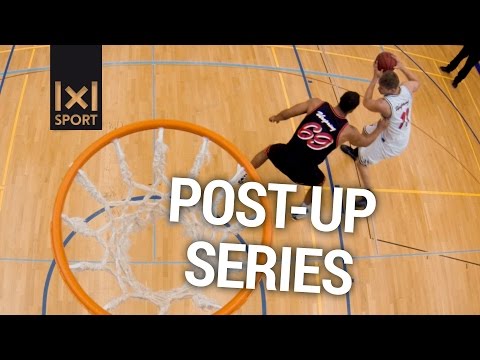
- Rotate. ...
- basketball in the Gallery.
What does Stephen Curry do? Stephen Curry (born March 14, 1988 in Akron, Ohio, USA) is an American basketball player who plays for and is the leader of the Golden State Warriors in the NBA.
How do you count points in basketball? Number points The number of points depends on the distance from which the throw was made. Any throw made outside the 3 lines points located at a distance of 6 m 75 from the ring, so it is worth 3. Any other basket is worth 2 points , except in the case of a free throw following a mistake. A free throw is worth point .
What is the minimum height for a basketball player? It requires a well-fixed cliché, to be a good basketball player, it is absolutely necessary that he be over 2 meters in height. However, it's quick enough to watch Tony Parker and his 1.![]() 88m, Spud Webb and his 1.70m or even Muggsy God and his well-packed 1.59m. for understand that the size of does not always matter.
88m, Spud Webb and his 1.70m or even Muggsy God and his well-packed 1.59m. for understand that the size of does not always matter.
What is the best way to throw a basketball? Keep a good elevation when shooting. Start the ball with the middle finger, placing it in the center. Get the highest release point. Keep your elbow in the direction of the basket.
Where will the strong striker fit? Princeton attack
In a situation of classical offensive strategy, the distribution of basketball players is basically the following: rod and strong striker find loans from the basket; winger halfway from the basket;
What is the role? Son of role usually use their size and physical mass to fill in close combat baskets and prevent opponent players from approaching their own basket.
How to choose an NBA team? You must find inexpensive players that will allow you to earn as many points as possible. Therefore, we advise you to Choisir franchise player such as James Harden or LeBron James and build team around him, taking into account the calendar of your players during the "game week".
Therefore, we advise you to Choisir franchise player such as James Harden or LeBron James and build team around him, taking into account the calendar of your players during the "game week".
Which position to choose NBA 2k21? Pick & Pop Pro - Defender / Shooter: In terms of distance, especially if you're playing with an aggressive leader, the shooter's turn is all you need to free your racket. And this year again, it is best to create him using the red / green diagram, but ... as a strong winger.
What does James Harden do? James Harden (full marital status: James Edward Harden Jr.), born August 26, 1989 in Los Angeles, is an American basketball defenseman and leader in the game.
When does the basketball game end? 1- How long does match last? Part se consists of 4 periods of 10 minutes, separated by an interval of 2 minutes, except for the period between 2 and 3 periods, where the interval is 15 minutes (break).
Why 3 free throws in basketball? From 1976 to 1984, the penalty for a shooting foul is three shots. francs of 10 e command error (then 8 e from 1980), the third lancer is only granted if one of the first two fails. This rule was abolished in 1984 when the three-point basket was introduced.
See also
How is the basketball game? Le basketball -ball is played by 2 teams of 5 ball players. The goal is to score the most points by scoring baskets. A match consists of 4 periods of 10 minutes, called quarters. The stopwatch stops at each whistle of the referee.
Does basketball make you taller? Thanks to the numerous jumps based on verticality, basketball will stimulate bone growth. Similarly, repeated sprints while playing will positively impact growth hormone production. … "VS' is is pretty hard to say yes, basketball makes you grow .
How to grow playing basketball? proper exercise with proper nutrition and a balanced diet increases the secretion of growth hormone in the body, which makes grow in size. in basketball, includes dribbling, shooting, jumping and rebounding, and most importantly, running.
Who is the smallest player in the NBA? Bogues smallest basketball player who played in NBA (1.6 m). In 1987, he was named twelfth by the Washington Bullets.
How to shoot well? Exercise 3: stand facing the wall, then leave a distance of one meter. Shoot at the wall, even abusing the trajectory of the ball (very high). It will help you shoot well in the air during the shoot in the match and therefore have an arcuate ball trajectory called " shoot at the bell."
Where to aim in basketball? COMMENT target ? At a short distance, to the side: target top corner closest to the small rectangle.